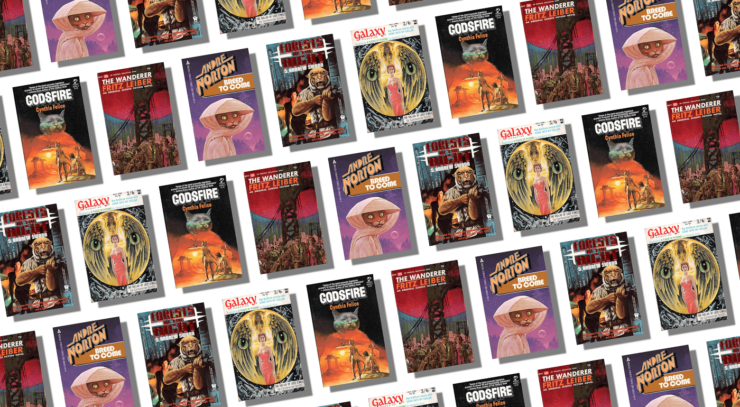
www.dailysignal.com
EXCLUSIVE: Andy Ngo Dissects the Recipe for Political Riots
On Thursday, Andy Ngo, the award-winning undercover riot reporter with The Post Millennial, joined Tony Kinnett’s show on 93 WIBC Indianapolis to discuss the crucial components of any political riots and how to defuse them before they become violent and destructive like the Kenosha and Minneapolis riots during the Black Lives Matter riots in 2020.
Following is the transcript of the interview:
Tony Kinnett: Let’s dig right into the biggest thing that you talk about, “Unmasked,” which is, again, “Antifa’s Radical Plan to Destroy Democracy.” How do these protests go from some kind of a nebulous idea to “everyone out in the streets” and then things start getting violent—because it always seems like we immediately flip from the concerns about protests to boom, it’s a riot.
Andy Ngo: Social media can actually play a role in revolution, believe it or not. It was what protesters used in the Middle East and North Africa for the Arab Spring, for example. Twitter was the vehicle for which information, videos, photos went out and inspired people to take to the streets to protest.
So, 2016 was a very big year. Turning point in the United States in November, there was the surprise election win of Donald Trump. And that was the first time that we saw social media being used to mobilize and I would say agitate—for bad faith actors and violent militants and revolutionaries to take to the streets ostensibly to protest what they said was a fascist candidate who had been elected.
From that moment onward, a lot of the strategies and networks, which have been in the works for many, many years, really got to test and to try out some of their tactics and with a lot of success.
So, Portland became quite an epicenter for a lot of Antifa violence against right wingers, for example, for four years leading up to 2020.
Then after the death of George Floyd, Portland became—Portland had the longest riots out of anywhere in the United States for 120 days straight. And then for really, actually, for a year, there were riots periodically.
So, fast forward four years from now, we’ve experienced a little taste of that this year in the form of the encampments that have been happening at the universities. There’s a new cause now, and that would be for Gaza, for Palestine, but the cause actually doesn’t really matter.
Ultimately, the agenda of the agitators—and there are professional riders for professional agitators involved in these encampments. And protests are wanting to work toward a revolution and they believe that they can damage America with a million cuts with the value thousand cuts. You can think of it as ants slowly and over time eating away at a body and in one isolated incident, you don’t really think of it as a big deal.
And in some ways, a lot of Americans naively looked at the riots that have been going back to 2016 and even beyond that with Occupy Wall Street and before that as well with other movements as isolated things that can be sort of just brushed off and life goes back to the status quo.
What we have now is a generation of revolutionaries, and we see them concentrated at universities, but also in other parts of society, who are ready to mobilize for the cause.
And the cause changes, but the goal is to destabilize the United States and ultimately to overthrow the United States government and also to attack the friends and allies on the global stage of the United States, which is why Israel is such a target currently.
Kinnett: That’s really key.
We’re on with Andy Ngo talking a little bit about what goes on on the inside of these protests and riots and maybe some of the rough things to come.
That’s the key, though, not just the United States, but the allies in Western civilization. Of course, we saw in Mexico City, the protesters set fire to the Israeli Embassy. And what happened a few hours later, Mexico announced that it would be joining the International Criminal Court and the International Court of Justice, those movements to investigate and prosecute Israel.
And then, of course, over here on the American side of the border, we’ve seen President [Joe] Biden kind of capitulate in ways to the far left side of this debate. Because it’s not a debate. It’s one side that’s articulating specific policies, actions, societal goals, and then it’s the other side that’s threatening to burn down whatever or, you know, quite succinctly, turn Chicago into 1968 again if they don’t get their way. And that’s what’s bad about it.
Wild to me, most of all, is that we’re not even seeing a direct cause of action is, well, we want the city to defund the police. Well, we want the city council members to do this. We will burn down the city until the federal level does what we want.
And so the question that a lot of Americans are asking is, are we expecting a fully loaded riot season heading into the summer of 2024 or do you think that that remains to be seen?
Ngo: It does remain to be seen. I think, broadly, we’re still feeling a bit of riot fatigue in the United States four years after George Floyd. Even though some of these encampments were very large at the university levels, we’re not seeing the same type of numbers that are showing out on the streets for Palestine like we did for BLM with George Floyd.
And the size of the crowd does matter because it’s the violent militants, the extremists need the human body shields to be able to better hide into a crowd in order to agitate for violence.
Kinnett: Is that one of the things that whips them up, is just the more bodies you have, the easier it is to spin out of control, for lack of a better way to phrase it?
Ngo: Absolutely. You only need a small number of violent militants within a larger crowd to really change the dynamic of a crowd. Breaking a window for a business, for example, is blood in the water. Starting fires in the street is also another tactic for blood in the water.
And though some of the Palestine demonstrations have indeed been very big, if you compare not just the scale, but the frequency to the George Floyd riots, they’re not as big.
So, the variables are slightly different, which is why, in my opinion, the strategy has been shifted to instead of having it be, for example, trying to take over a part of the city, let’s focus—and when I say “let’s,” I’m speaking as if I was one of the militant organizers—let’s focus it to a smaller area.
Like a university, for example, where they know the administrations will be cowed, where they know that the university’s presidents, many of them are left wing themselves and sympathetic to the cause, and will allow the encampments to go on, will give into the demands.
And this is exactly what has happened.
For example, Portland State University, University of Washington in Seattle, the university presidents there have capitulated, allowed the militants who destroy property to shut down parts of campus and also to not face any liabilities.
Kinnett: The question that a lot of people have to be asking—and whether they’re tuning into the show or whether they’re quite honestly following these crazy stories either on encampments or maybe they’re worried about some kind of a situation, you start to reach a point where the protest feels like it’s here to stay. It’s not just an afternoon march holding some posters. Now it feels like it’s moving on to that next step.
How do city council members or local police or officials of any sort, whether, again, you’re in a private area, like a private university or in a public space, how do you start to diffuse it? Because you’ve been on the inside, you have been among the people. The individuals who have whipped things up into a very, very fiery inferno, a frenzy. So, how do you start to diffuse that when you realize things are starting to go to the next level?
Ngo: There are two prongs to this. First and foremost is a law enforcement answer because there are a lot of criminal activities happening.
It’s not OK, for example, for protesters and rioters to shut down roads, but we’ve come to accept that when they have their direct actions that this is what happens and nobody faces any consequences. So, that type of baseline has to change, first of all.
And when people harass and intimidate people in a criminal manner, vandalize, obviously, all those things seem to be prosecuted. But often what happens is these types of actions are organized intentionally in cities where prosecutors are openly progressive, left wing, and don’t prosecute those who carry out left-wing political violence.
The other thing is also for a change in the way that the culture views violence from far-left extremism.
I think part of the success of these movements, no matter how violent or deadly they are, how frequently they happen, their outbursts of violence, the wider public is gaslit and misinformed about the threat of far-left extremism.
All of the nonprofit groups, for example, that purport to keep an eye out on hate and extremism, these are all left-wing groups that obfuscate the violence of the Left and/or defend it or are part of it in terms of the propaganda themselves.
That’s a big problem. So, we need leadership, particularly among Democrats, to speak out and say, “This is not the norm.”
And we’re not talking about censoring people or taking away First Amendment rights. We’re talking about pushing back against those who advocate for a normalization of political violence. And that’s what we’ve seen in America.
Kinnett: Like Bill Clinton pushing back against the far left back in the ’90s that tried to, you know, gaslight everything. And he kind of came out, strangely so, and kind of slapped everything down. Is that the kind of Democrat leadership, at least in that moment, you’re kind of talking about?
Ngo: Yes, but even more so. Like, by Democrat, I’m also referring to a lot of legacy media who allied themselves with Democrats, cultural institutions that are liberal, liberal institutions, and of course liberal politicians themselves. All that really, they have to speak out and, unfortunately, they don’t because they buy into a lot of the propaganda that these protesters are doing, things in the name of social justice or racial justice or anti-racism or anti-fascism, and they give into the propaganda.
So, unfortunately, there’s been a lot of misinformation and disinformation happening from organizations, media institutions that really should be the ones illuminating the public, that say, “We have a problem here.”
Kinnett: I think you’re dead-on. Yep. As usual, Andy Ngo, bestselling journalist, senior editor over at The Post Millennial, we’re obviously big fans of Libby Emmons’ crew over there. Also, don’t forget to pick up his book “Unmasked: “Inside Antifa’s Radical Plan to Destroy Democracy.” It’s got a new afterword in it that I gotta say is, again, as is his brand, pretty dead-on. Andy, thank you so much for joining us.Ngo: My pleasure.
The post EXCLUSIVE: Andy Ngo Dissects the Recipe for Political Riots appeared first on The Daily Signal.
















